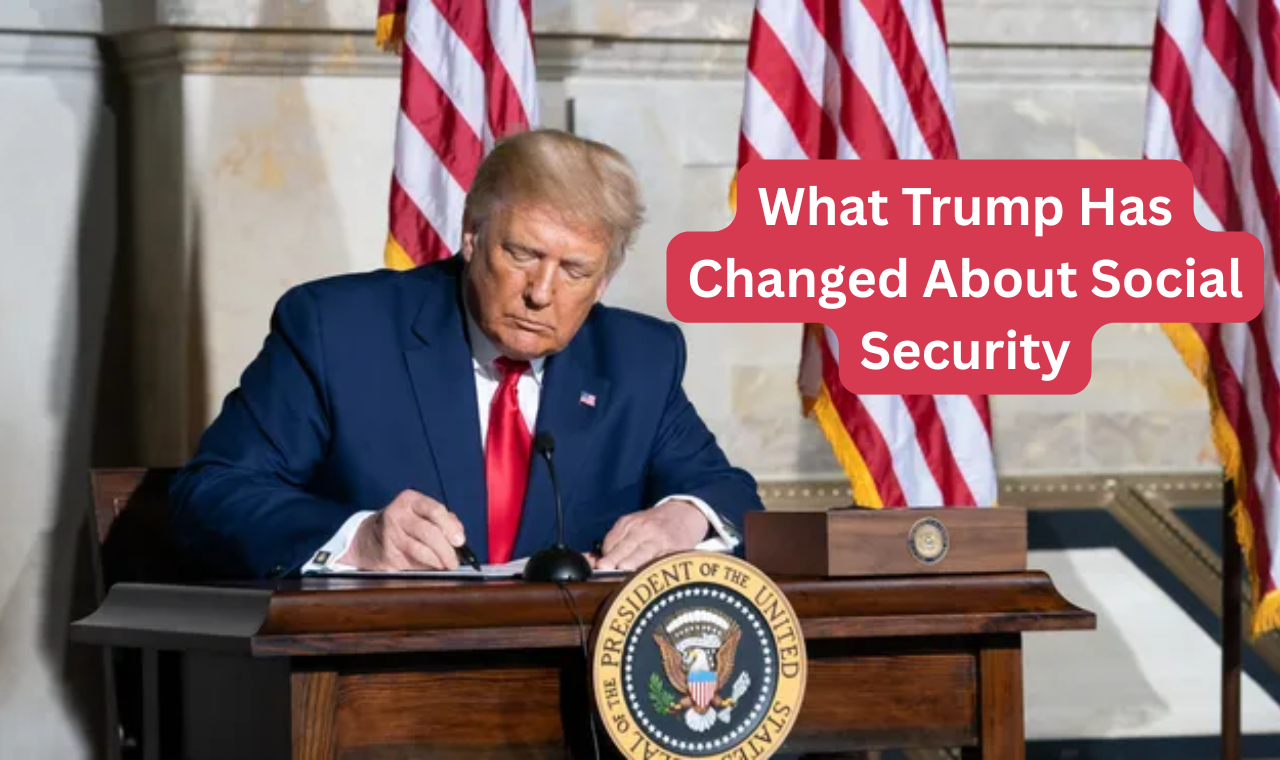President Donald Trump has introduced a number of changes to the Social Security system in 2025, sparking debate across political lines. While these adjustments have not directly reduced benefits, critics argue they may undermine access and long-term program stability.
Here’s a breakdown of what’s changed, what it means for beneficiaries, and how the government is responding.
Administrative Shakeups Raise Accessibility Concerns
One of the most immediate changes under the Trump administration is a proposed reduction in Social Security Administration (SSA) staff. The plan would cut nearly 10% of the agency’s workforce and lead to the closure of several field offices nationwide. Critics say this will disproportionately affect rural communities, seniors, and people with disabilities who rely on in-person assistance.
According to a report from the Pennsylvania Independent, the cuts have already begun affecting wait times and access to vital services.
Additionally, the administration tightened identity verification protocols, requiring more stringent documentation for online services. Initially, the SSA removed phone-based verification—a move that drew significant backlash. After public criticism, exceptions were reinstated for vulnerable groups such as the elderly and the visually impaired.
Changes in Overpayment Recovery Policies
Another significant shift involves how the SSA handles overpayments. Under Trump’s new guidelines, if someone is mistakenly overpaid Social Security benefits, the agency can now recover 100% of the monthly benefit until the debt is repaid. Previously, the SSA had options for partial withholding.
This has alarmed many advocacy groups, who argue that full benefit garnishment could lead to financial hardship for low-income seniors.
The SSA addressed the policy update by stating that the agency would work with affected beneficiaries on a case-by-case basis and offer waivers or adjustments where appropriate.

Proposals to Cut Taxes on Benefits Spark Funding Fears
President Trump has also renewed calls to eliminate federal income taxes on Social Security benefits, overtime pay, and tipped income. The proposal is part of a broader economic agenda aimed at boosting take-home pay for working Americans.
While the move could provide immediate relief for retirees and workers, experts caution that cutting taxes on Social Security income could significantly reduce revenue flowing into the Social Security Trust Fund.
The Social Security Trustees’ 2024 report already warned that without increased funding, the trust fund could be depleted by 2033, resulting in an automatic 20% cut in benefits.
“Reducing taxes without offsetting revenue will only speed up insolvency,” said Alicia Munnell, director of the Center for Retirement Research at Boston College, in a recent analysis.
Crackdown on Fraud: Targeting Ineligible Payments
Trump also signed an executive memorandum directing the SSA to crack down on fraudulent or ineligible Social Security payments, particularly to undocumented immigrants. Though non-citizens without legal status are already barred from receiving Social Security benefits, the administration says this order strengthens enforcement.
In a White House statement, officials claimed the action is meant to “ensure American taxpayers’ dollars are not misused.”
However, critics argue that the actual occurrence of fraud from ineligible individuals is statistically negligible and that such rhetoric fuels misunderstanding about who qualifies for benefits.
The SSA emphasized in a public response that current law already prohibits payments to undocumented individuals and that no new benefit categories have been created or expanded.
Political Reactions: Battle Lines Drawn
President Trump’s changes have not gone unnoticed by political opponents. In a speech earlier this month, former President Joe Biden accused Trump of “sabotaging Social Security from the inside out” by quietly undermining its administration and finances.
“Social Security is not just a line item. It’s a lifeline,” Biden said in a speech covered by Axios.
The Trump administration responded by stating that benefits remain untouched, and that the changes aim to modernize the program, eliminate waste, and streamline services.
An official White House fact check defended the administration’s record, saying the president “will always protect Social Security and Medicare.”
What It Means for You
Despite no direct cuts to benefits so far, the operational and policy changes could impact how easily Americans can access their Social Security entitlements—and how sustainable the program will be in the years ahead.
Beneficiaries should:
- Monitor their SSA accounts regularly at ssa.gov
- Review overpayment notices and repayment options
- Stay informed about policy changes from credible sources
Final Thought
While President Trump’s recent changes to Social Security don’t slash benefits outright, they reshape the system’s foundations in ways that could ripple for years to come. Tighter administration, aggressive debt recovery, and potential funding shortfalls from proposed tax cuts paint a complex picture—one where efficiency and savings may come at the cost of accessibility and security for millions of Americans.
Whether these reforms will strengthen Social Security or undermine its promise remains to be seen. But one thing is clear: Americans of all ages should pay close attention. The future of Social Security is no longer just

Pankaj Kumar is a skilled content writer at OTE News, focusing on breaking news, technology, and socio-political developments. With a background in Mass Communication, he brings a balanced perspective to his articles, ensuring clarity and reliability. Pankaj has a knack for simplifying complex topics for readers.
In his free time, he enjoys photography, traveling, and experimenting with new cuisines. His curiosity and dedication to truthful reporting make him a valuable contributor to OTE News.




